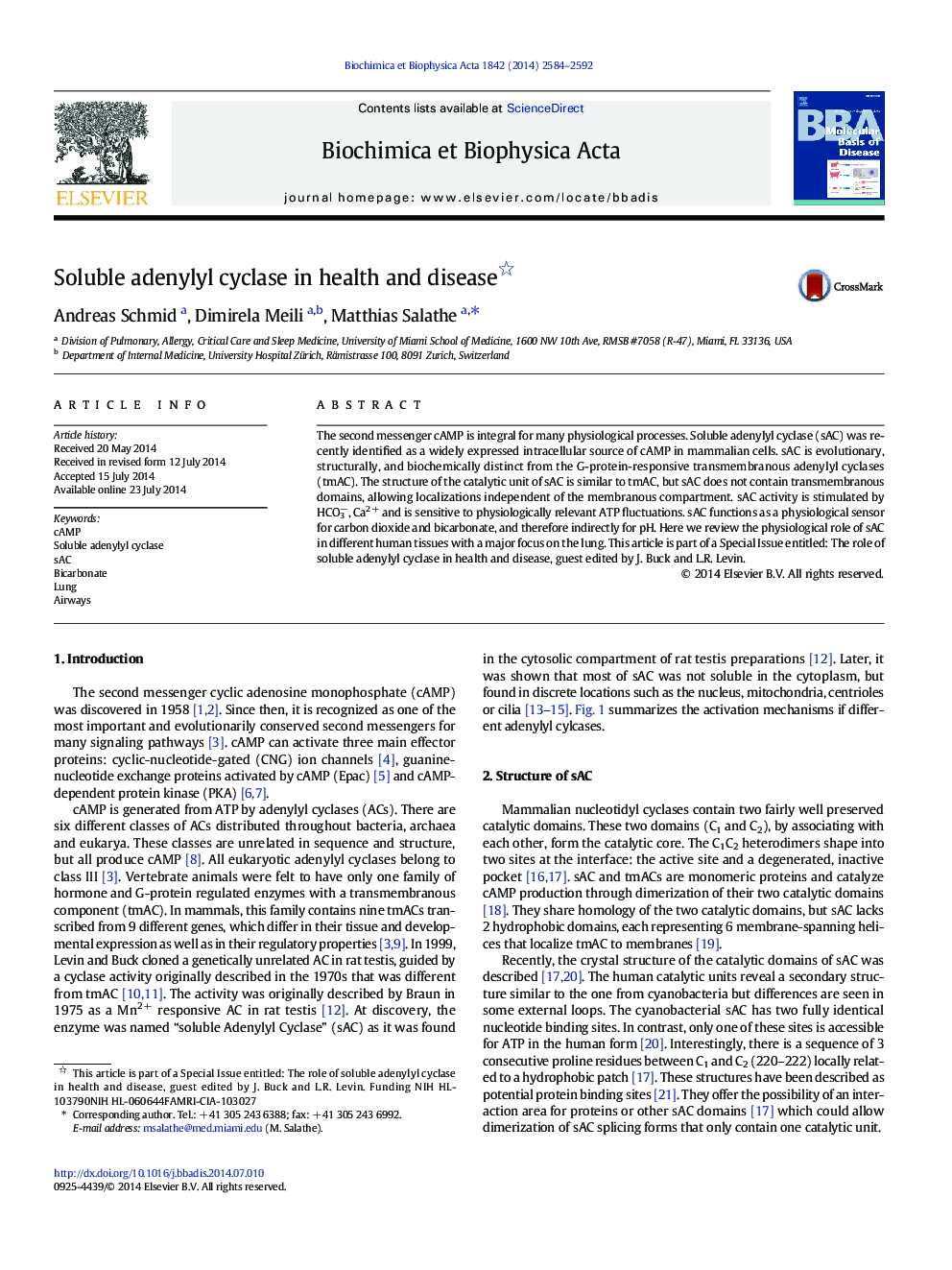| Article ID | Journal | Published Year | Pages | File Type |
|---|---|---|---|---|
| 1904636 | Biochimica et Biophysica Acta (BBA) - Molecular Basis of Disease | 2014 | 9 Pages |
•A review of the role of soluble adenylyl cyclase (sAC) in health and disease is presented.•The main focus of the review is the lung and the airway.•Recent advances in our understanding of the importance of sAC in signaling are reviewed.
The second messenger cAMP is integral for many physiological processes. Soluble adenylyl cyclase (sAC) was recently identified as a widely expressed intracellular source of cAMP in mammalian cells. sAC is evolutionary, structurally, and biochemically distinct from the G-protein-responsive transmembranous adenylyl cyclases (tmAC). The structure of the catalytic unit of sAC is similar to tmAC, but sAC does not contain transmembranous domains, allowing localizations independent of the membranous compartment. sAC activity is stimulated by HCO3−, Ca2 + and is sensitive to physiologically relevant ATP fluctuations. sAC functions as a physiological sensor for carbon dioxide and bicarbonate, and therefore indirectly for pH. Here we review the physiological role of sAC in different human tissues with a major focus on the lung. This article is part of a Special Issue entitled: The role of soluble adenylyl cyclase in health and disease, guest edited by J. Buck and L.R. Levin.
